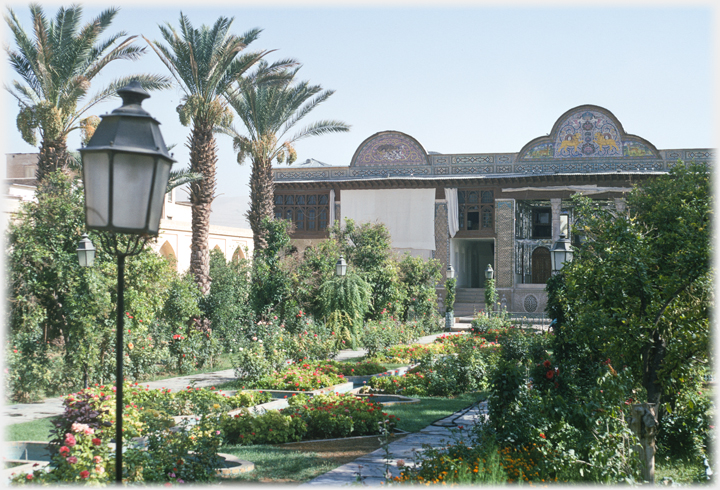 The Narenjestan or more fully Narenjestan-i Qavam (The orange place of the Qavam's) takes its name from the Qavam family who commissioned the building in the mid 1800s. The picture shows the garden with the main building in the background
The Narenjestan or more fully Narenjestan-i Qavam (The orange place of the Qavam's) takes its name from the Qavam family who commissioned the building in the mid 1800s. The picture shows the garden with the main building in the background
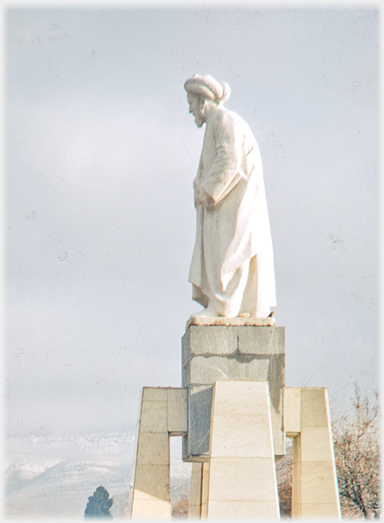 Shiraz is famous historically for two reasons: its poets and
Persepolis.
The two outstanding poets are Hafez who lived from about 1325 to 1390, and Saadi, whose statue this is, and who lived a century earlier
Shiraz is a delightful place to live. The climate, like most of Iran, is so dry that the heat and cold are acceptable. The cultural life is appropriate to a university town, the Iranian cooking delicious and the people easy and friendly. Although fewer than in Isfahan, the monuments are numerous, and the local ethnic minorities and cultures of considerable interest. This page uses one building from the Qajar Period (1781-1925), Narenjestan, to illustrate the architectural quality.
Shiraz is famous historically for two reasons: its poets and
Persepolis.
The two outstanding poets are Hafez who lived from about 1325 to 1390, and Saadi, whose statue this is, and who lived a century earlier
Shiraz is a delightful place to live. The climate, like most of Iran, is so dry that the heat and cold are acceptable. The cultural life is appropriate to a university town, the Iranian cooking delicious and the people easy and friendly. Although fewer than in Isfahan, the monuments are numerous, and the local ethnic minorities and cultures of considerable interest. This page uses one building from the Qajar Period (1781-1925), Narenjestan, to illustrate the architectural quality.
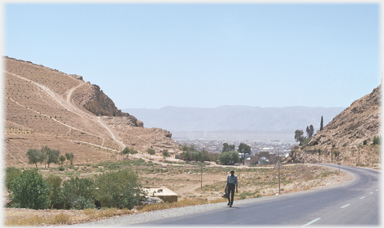 The approach road to Shiraz
The approach road to Shiraz
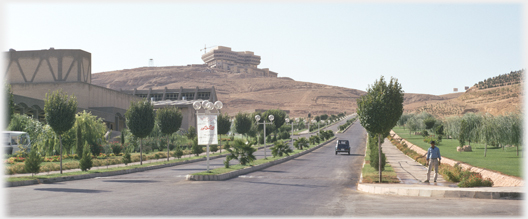 What are now the extensive buildings of Shiraz University, on the Erum hill, were being started in 1973
What are now the extensive buildings of Shiraz University, on the Erum hill, were being started in 1973
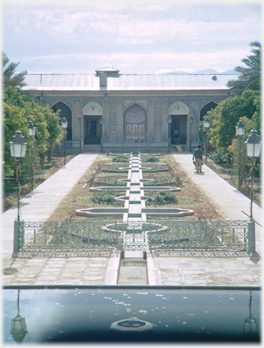 The garden of Narenjestan in more sombre mood looking towards the entrance buildings
The garden of Narenjestan in more sombre mood looking towards the entrance buildings
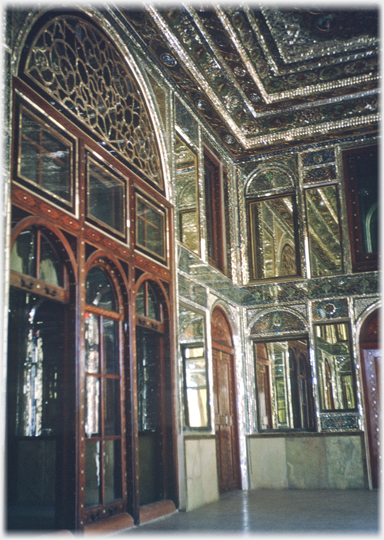 A large three walled reception room, with a garden and pools in front of it, is a paradigm of grand house design in Iran. Probably its greatest example is the
Chehel Sotoun Palace
in Isfahan. Narenjestan offers the design in Shiraz on a comfortable, liveable scale
The Narenjestan was constructed between 1879 and 1886 and is a fine example of the Qajar period when many architects and builders were turning to the European tradition for inspiration. In the 20th century the house became part of the University and was home to the outstanding Iranologist Arthur Upham Pope and his 'Asia Institute' with its large archives of Iranian art and architecture; it is now a museum.
A large three walled reception room, with a garden and pools in front of it, is a paradigm of grand house design in Iran. Probably its greatest example is the
Chehel Sotoun Palace
in Isfahan. Narenjestan offers the design in Shiraz on a comfortable, liveable scale
The Narenjestan was constructed between 1879 and 1886 and is a fine example of the Qajar period when many architects and builders were turning to the European tradition for inspiration. In the 20th century the house became part of the University and was home to the outstanding Iranologist Arthur Upham Pope and his 'Asia Institute' with its large archives of Iranian art and architecture; it is now a museum.
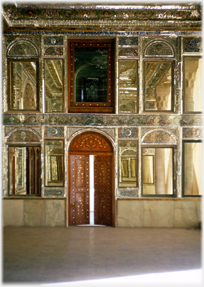 The south-east wall of the reception room
The south-east wall of the reception room
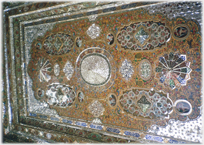 The mirrored roof of the main reception room
The mirrored roof of the main reception room
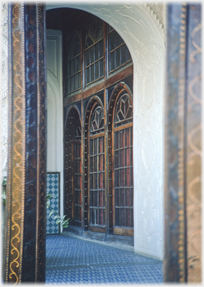 Doorway and pillars in the entrance building
Doorway and pillars in the entrance building
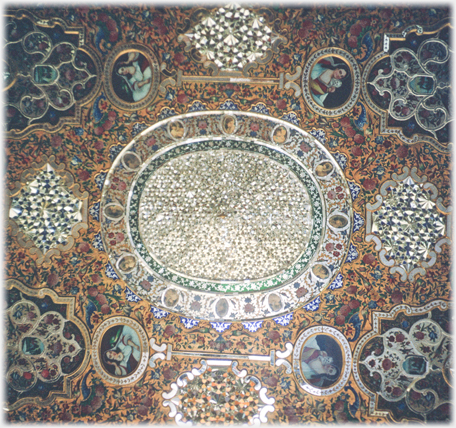 The central area of the main ceiling with its elaborate mirror-work and paintings
The central area of the main ceiling with its elaborate mirror-work and paintings
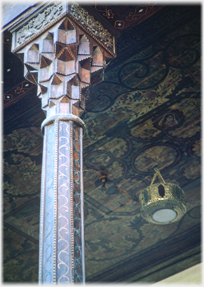
The attention to architectural details in Iran makes buildings sumptuous; the decoration seen above is in the waiting area of the entrance building.
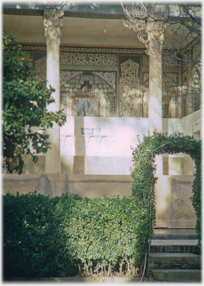 One of the open side rooms of the main building
One of the open side rooms of the main building
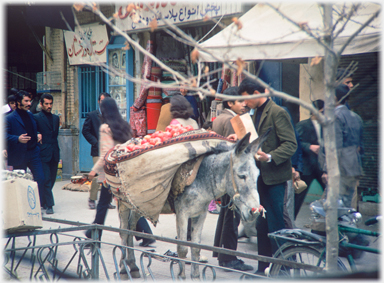 Pomegranates are Iran's delight; and donkey's the best mobile fruit stall anywhere
Pomegranates are Iran's delight; and donkey's the best mobile fruit stall anywhere
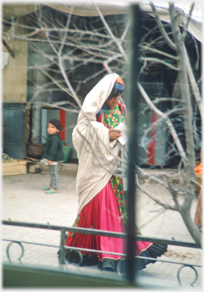 The largest ethnic group in the Shiraz area are the Qasqai; the clothing of the women is eye-catching
Taxis are orange, riders hitch with their thumbs, and are shoe-horned into the packed car as they join. But men and women cannot be mixed on the bench seats - drivers are un-sexed. The elaborate in and out dance, with up to three in the front, and five behind, as the different sexes join the car, requiring different configurations, are a joke for everyone.
The largest ethnic group in the Shiraz area are the Qasqai; the clothing of the women is eye-catching
Taxis are orange, riders hitch with their thumbs, and are shoe-horned into the packed car as they join. But men and women cannot be mixed on the bench seats - drivers are un-sexed. The elaborate in and out dance, with up to three in the front, and five behind, as the different sexes join the car, requiring different configurations, are a joke for everyone.
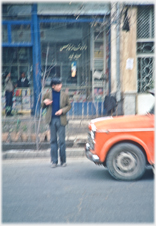 Taxi hailing
Taxi hailing
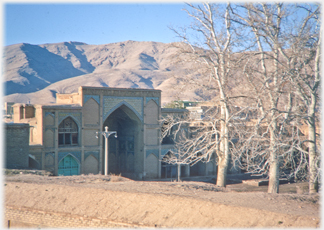 Can you help with identifying this building, it is most probably in Shiraz itself or Fars Province
Can you help with identifying this building, it is most probably in Shiraz itself or Fars Province
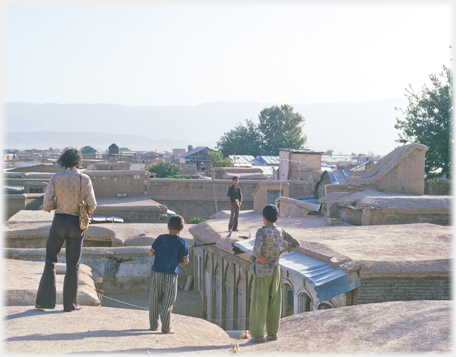 While a westerner enjoys a view across Shiraz, boys enjoy viewing the westerner
While a westerner enjoys a view across Shiraz, boys enjoy viewing the westerner
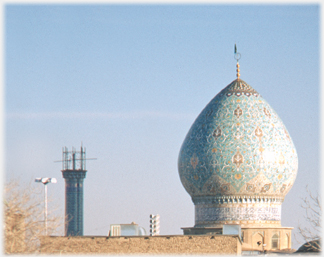 The dome of the Shah Cheragh Mosque - the new minarets are under construction - in cold winter light
The dome of the Shah Cheragh Mosque - the new minarets are under construction - in cold winter light
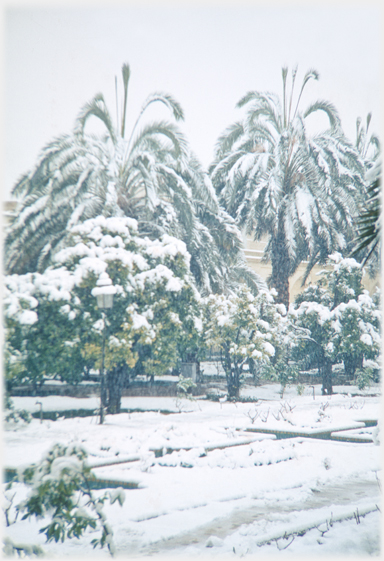 Palm and orange trees in the snow - an orange tree in snow is a sad sight
Palm and orange trees in the snow - an orange tree in snow is a sad sight
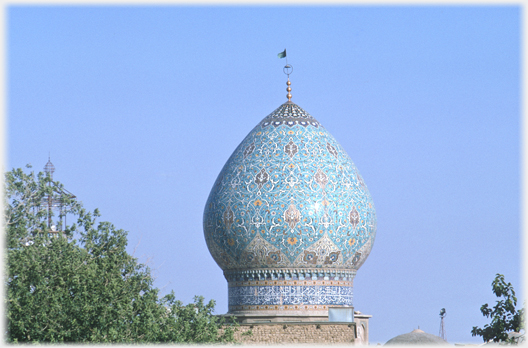 The dome of the Shah Cheragh Mosque in summer
The dome of the Shah Cheragh Mosque in summer
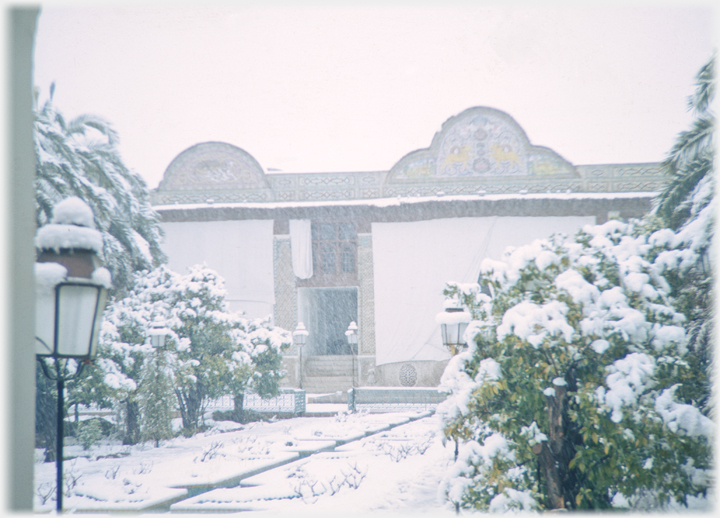 Narenjestan in a snow shower - a reminder of Iran's extreme temperatures
The air in Shiraz, as in much of Iran, is very dry indeed, humidity is often in single figures. A shirt washed is usually dry to wear in half an hour. So sun-dried brick is the normal building material, this withstands the tiny rainfall, but snow is another matter. If the snow is allowed to lie on the bricks they dissolve! So snowfalls, which are not common but not exceptional, result in householders out on their roofs and walls desperately sweeping the snow away.
The next page
takes you to the ruins of the city of Persepolis, with its 2,500 year old stone carvings that are splendidly well preserved in the dry desert air.
Narenjestan in a snow shower - a reminder of Iran's extreme temperatures
The air in Shiraz, as in much of Iran, is very dry indeed, humidity is often in single figures. A shirt washed is usually dry to wear in half an hour. So sun-dried brick is the normal building material, this withstands the tiny rainfall, but snow is another matter. If the snow is allowed to lie on the bricks they dissolve! So snowfalls, which are not common but not exceptional, result in householders out on their roofs and walls desperately sweeping the snow away.
The next page
takes you to the ruins of the city of Persepolis, with its 2,500 year old stone carvings that are splendidly well preserved in the dry desert air.
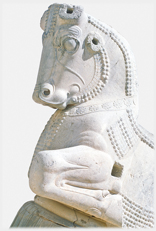

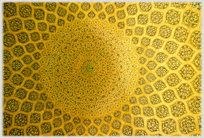 The last page was about Mosques in Isfahan
The last page was about Mosques in Isfahan
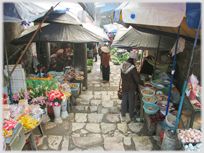 Another town at 4,000 feet which has (very occasional) snow - Sa Pa in Vietnam
Another town at 4,000 feet which has (very occasional) snow - Sa Pa in Vietnam
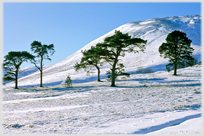 To the snow at St Mary's Loch in Scotland
To the snow at St Mary's Loch in Scotland
